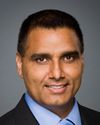I have three thoughts. First, we need the federal Minister of Health to have a passionate burning in her heart and a vision for what health care should be in this country, and it does need to be focused on prevention and on deploying federal dollars for prevention and not just on treatment.
Second, we need to align provinces and territories, and I believe that does need to start at the federal level. So we need our federal Minister of Health to pull the provinces and territories together, share that burning passion, and be sure that it's shared by the provinces and territories so that we're all moving in the same direction.
Third, with Andrea and PHEC and about eight other organizations in this country, we've created Active Canada 20/20, which is a national strategy for physical activity. It's a change agenda for this country, which could form the basis of some of those conversations with the federal Minister of Health right through to provinces and territories. It includes not only policy but programs and social marketing as well.



